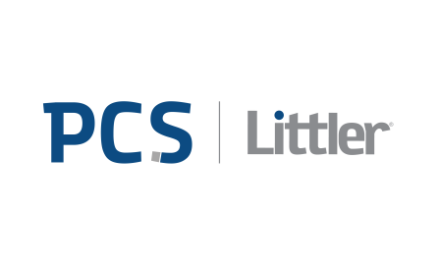
By Michael Dembinski, chief advisor, and Dorota Kierbiedź, membership director, BPCC
If there’s one business trend that will outlast all others out there, it’s the ongoing process of digitalisation. Readers who remember when computers were first being introduced into the corporate world will appreciate just how far we’ve come in a little over a generation. The pace of change, however, is accelerating, and the digital world we work in today will seem as dated in ten years’ time as the era of fax machines, pagers, MS DOS and floppy disks.
That change is being driven by AI (there’s no longer any need to spell out what it means!), while at the same time the mobile revolution heralded by the original iPhone is beginning to plateau. What next? The metaverse – with VR and AR headsets taking over from smartphones – isn’t materialising as quickly as its proponents predicted. AI, however, is moving in everywhere. Meanwhile, the regulatory system is slowly catching up, which means – in areas such as taxation, data protection, privacy and intellectual property – that businesses need to be ready.
We’ve prepared five interviews and 19 articles for you that cover these topics. Please have a read below, and dip into those pieces that interest you; there’s some great new information and business insights here that will enhance your understanding of the digitalising world.
The interviews
The IT talent market in Poland is the main reason why foreign investors are drawn to the country as a location for tech hub. Marcin Adamowicz, CEO of GS Services, talks about current IT recruitment trends, and what’s needed to recruit and retain the talent needed to give a business its competitive edge. How is demand for IT skills in Poland today – and what factors are shaping demand and supply? Łukasz Grzeszczyk, executive director for CEE at Hays, looks at the recruitment of high-end IT specialists and the trends that are shaping the Polish market. And Marcin Bohdziewicz, head of HL Tech’s Warsaw hub, discusses the challenges of developing cross-cultural tech teams working between the UK and Poland.
A major issue facing all businesses in Poland will be the implementation of electronic invoicing (KSeF). Poland is among the first countries in the EU to digitalise its tax system this way. Where Poland leads, other member states will follow – the companies responsible for the IT systems enabling the process will have a head start in export markets. Tomasz Kuciel, CEO of Editel Polska S.A. describes this revolutionary step along the way to real-time accounting, and the challenges facing business as it prepares to digitalise its invoicing processes. Comarch’s director of consulting for the UK, Jakub Frankiewicz, considers the differing requirements for e-invoicing across differing jurisdictions around the world, and the tech solutions that will ease cross-border trade in future.
The articles
Number one topic – AI use-cases at work.
How can you put AI to work in your business? Paweł Prymakowski, CEO of IT Vision offers practical tips on using AI for such business processes as accounting and marketing.
AI can also make light work of extracting insights from unstructured business data. Su Kent from Crayon explains how AI can retrieve data from disparate sources and make sense of it all.
Jarosław Agatowski from AstraZeneca Pharma Poland says that AI has become a foundation in the activity of innovative pharma companies. A typical prescription drug development cycle takes 10-15 years and more than $2 billion investment per one new medicine. Now, AI is accelerating the drug discovery process, and reducing clinical trial costs. Poland also plays a vital role here.
Leon Suchocki from Wunderman Thompson Commerce & Technology looks at the role generative AI will play in marketing, which leads to the need for curative AI. [If the name’s unfamiliar, Lester Wunderman literally invented direct marketing in the 1960s; the ‘Thompson’ is from the legendary J. Walter Thompson agency.]
AI can also make coding easier. Teodor Teter from Globalworth, the leading office owner and manager in Poland, says low-code platforms and AI integration automate and facilitate many everyday duties of company employees, and drive building-management-system apps.
Bartłomiej Kowalczyk, director of AutomateNow, examines the role of AI and automation in sales processes, and how AI can integrate with CRM systems to optimise the sales process without sacrificing the personalised touch.
Finally, in an innovative and thought-provoking dialogue with an AI chatbot, Marek Gołębiowski from sherlock7 takes ChatGPT-4 for a gruelling test-drive to show you where the limitations of AI can currently be found.
We enter the regulatory and legal environment…
Anna Michałowska, public affairs manager, Grayling Poland, explains how public digital policy and regulation keeps up with digital technology at EU and national level, and how the private sector has to navigate through the intricacies of this new regulatory framework.
[We don’t recall any previous issues of Contact Magazine Online that resulted in as many as nine pieces from law firms! Clearly, AI – six articles (!!) – has opened a vast amount of brand-new legal questions that businesses need clarity on before moving forward.]
Generative AI (GenAI) in areas such as artwork or creative writing has been accused of stealing intellectual property. Paulina Perkowska and Piotr Kaniewski from Osborne Clarke ask whether content generated by AI can be protected by copyright, and if so, what users of such material should bear in mind.
Szymon Sieniewicz, from Linklaters, says that even countries that don’t recognise copyright in AI-generated works acknowledge that such works which are significantly influenced by human input may be protected by copyright. This leads to a position where the IP protection available for any work is difficult to assess – and can vary from country to country.
Ewa Mońdziel and Amelia Prawda from JDP Law assess whether developers and users of GenAI are copyright infringers, and if using works protected by copyright for training GenAI models leads to copyright infringement. What does this mean for authors of copyrightable works – and does copyright protect AI-assisted output?
Using AI tools in an international environment means businesses that do so must seek common ground for cross-border regulation, according to Paweł Gruszecki from Dentons’ Warsaw office. In particular, EU-based firms need to check the legal status of an AI service provider in terms of public regulation – important, given that so many of the leading AI firms are from outside the EU.
Our existential worries about AI stem from the fact that we know what data is going in, and we can see the output, but we don’t know what’s going on inside the box; their operations are inexplicable. Aleksandra Cywińska, Bird & Bird Poland, looks at how the EU intends to open those AI black boxes.
AI gets everywhere – and that includes tax. AI models are an effective tool for tax administrations, which monitor taxpayer activity by analysing data, to detect VAT fraud and select taxpayers for tax audits. Paweł Goś of MDDP takes a broad look at potential barriers to the development of AI by tax authorities, including ethics and respect for general taxpayer rights in a way that inspires confidence.
Adriana Zdanowicz-Leśniak and Agnieszka Górecka from CMS delve into the EU’s Digital Services Act, which regulates large online platforms, looking in particular at the way AI-powered algorithms serve up what you get to see in your social-media feeds.
The pandemic accelerated the digitalisation of HR processes across business. Anna Kencel and Bartosz Wszeborowski from PCS Paruch say that some digital solutions implemented by firms may prove to be invalid or ineffective under the law.
Jan Ziomek, from Kochański & Partners, reminds credit and payment institutions, insurance firms and intermediaries that the EU’s Digital Operational Resilience Act comes into force in less than 15 months’ time – and what they need to do about it now to be ready.
Don’t forget the hardware and the data centres!
The AI explosion means that digital traffic is growing significantly year on year. Interconnectivity between data hubs needs to keep up, and is critical to the successful growth of business in the digital age. Adam Pytlik of Exa Infrastructure considers the hardware and the connections holding up the tech revolution, and the data centres at the heart of it all.
Finally: are you sitting comfortably?
The way we work is changing; the way our offices look reflects that. Furniture manufacturer Kinnarps offers different meeting spaces that encourage productivity, efficiency and creativity.
























